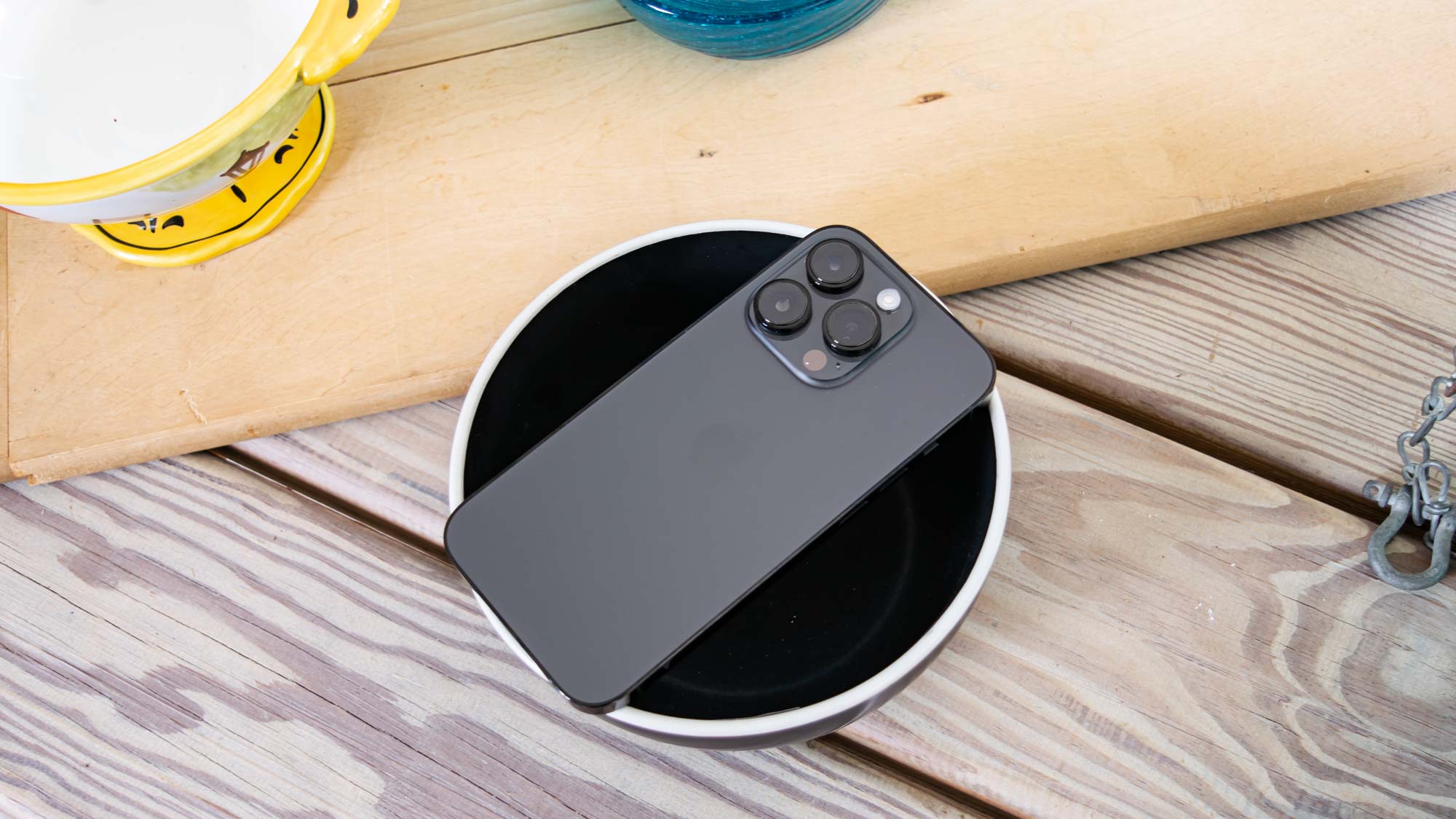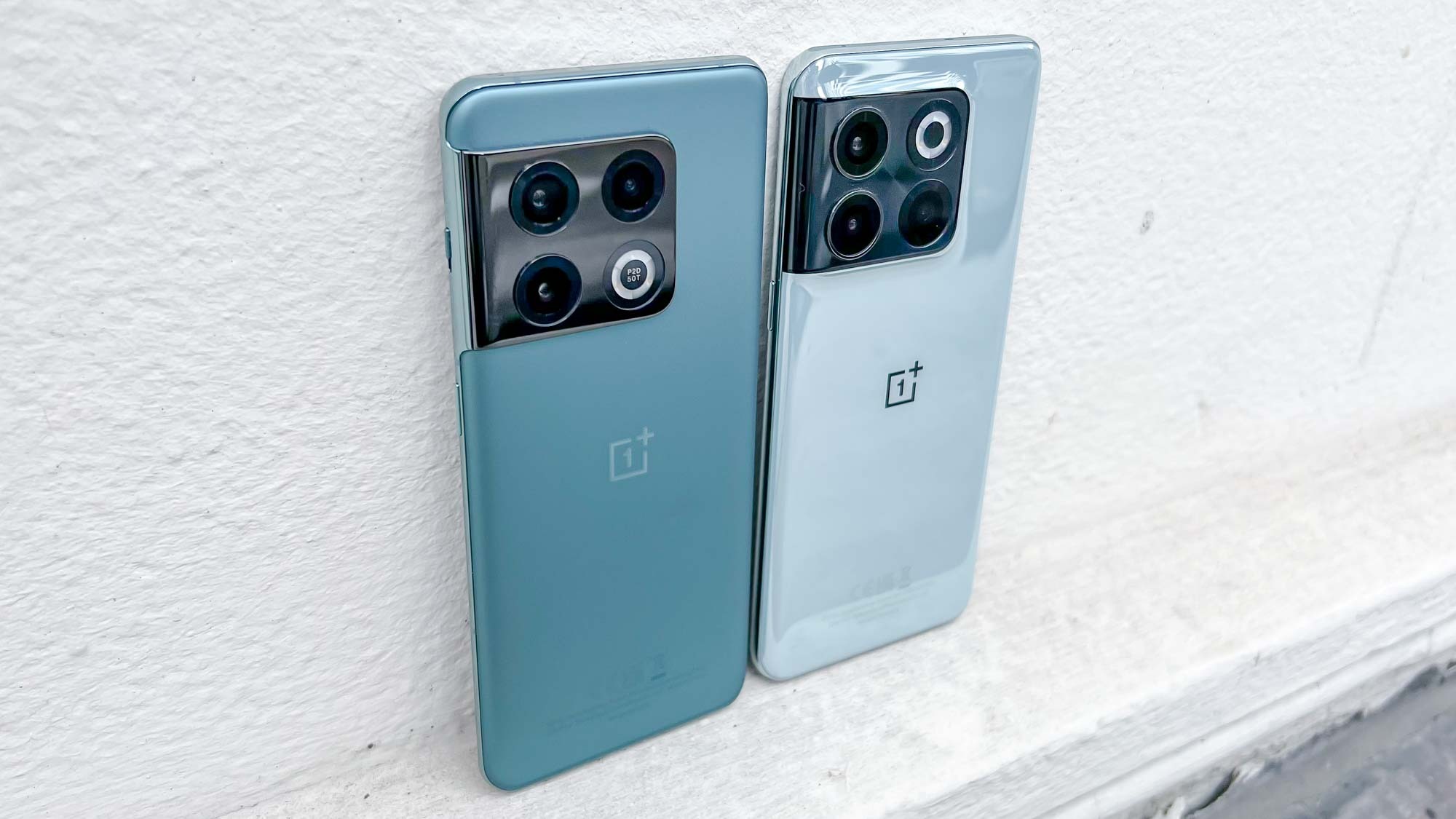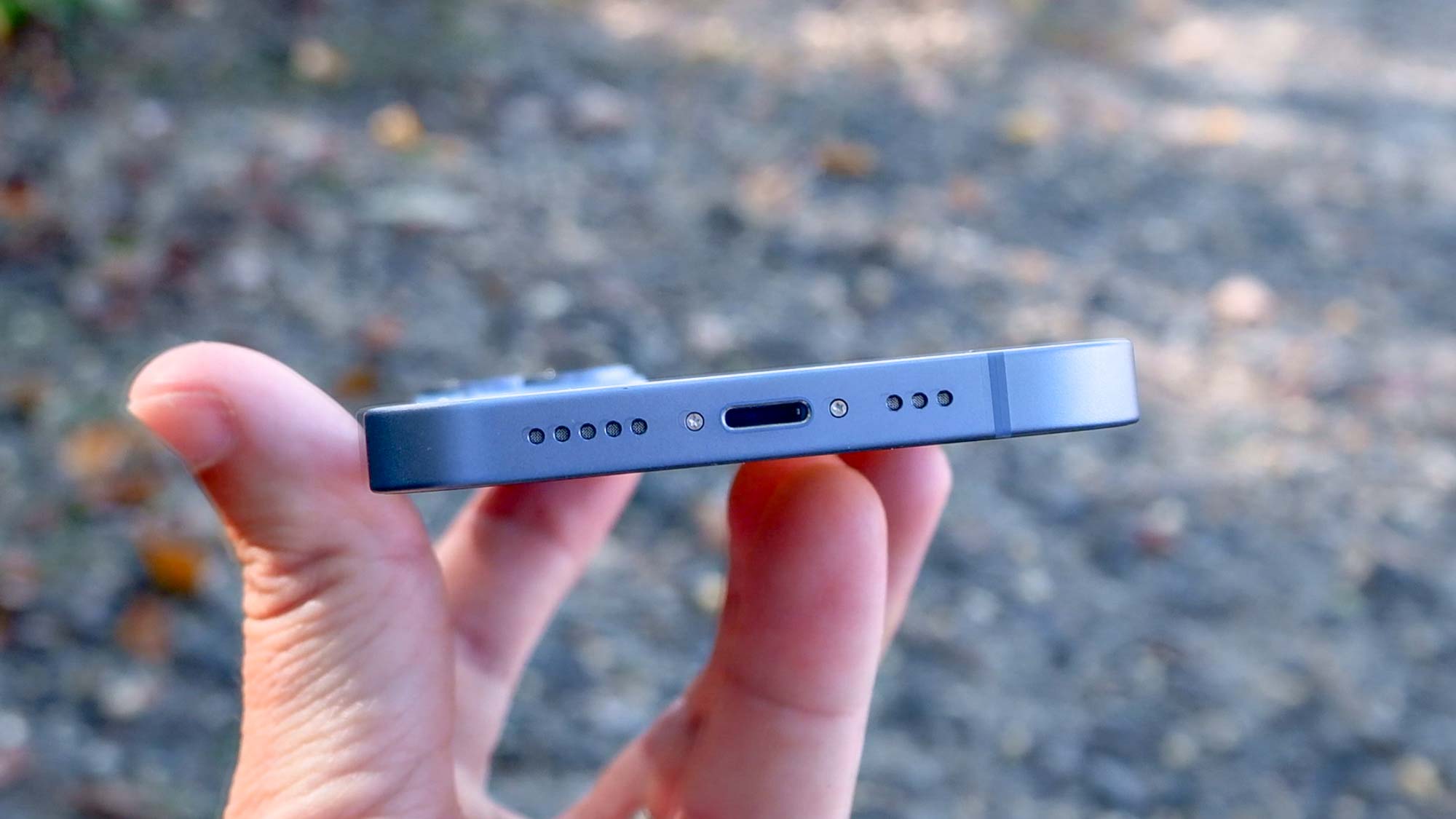iPhone 14 Pro charging speed disappoints — and these numbers prove it
Apple's Pro phones just can't keep pace with fast-charging rival devices

The new iPhone 14 models have a lot going for them. But fast charging speeds are not among those many strengths.
Apple made a lot of upgrades to its latest phones, especially for the iPhone 14 Pro models. Both the Pro and the iPhone 14 Pro Max benefit from a faster A16 Bionic processor and an upgraded 48MP main camera, among other changes. Even the standard iPhone 14, which only saw modest changes from its predecessor, still gets some improvements.
But amid all those changes, charging speed for all four iPhone 14 models remains at 20W via a wired connection. That's not necessarily slow on its own — plug your iPhone into a 20W charger, and a you should get a 50% charge after half-an-hour.
Put that charging speed in the context of what other premium flagships can do, though, and the iPhone 14 begins to pale by comparison.
As part of our smartphone testing, we drain a phone's battery completely as part of our battery test. We then plug each device into a charger and write down what percentage the battery is at after 30 minutes. Here's how the iPhone 14 Pro and iPhone 14 Pro Max compare to similarly priced Android phones that we've reviewed in the past year.
| Phone | Battery Size | Charging speed | Percentage charged after 30 minutes |
| iPhone 14 Pro | 3,200 mAh | 20W | 57% |
| iPhone 14 Pro Max | 4,352 mAh | 20W | 42% |
| Galaxy S22 Ultra | 5,000 mAh | 45W | 70% |
| Galaxy Z Fold 4 | 4,400 mAh | 25W | 50% |
| Galaxy Z Flip 4 | 3,700 mAh | 25W | 54% |
| OnePlus 10 Pro | 5,000 mAh | 65W (US charging speed) | 93% |
| OnePlus 10T | 4,800 mAh | 150W | 100% (20 minutes) |
| Pixel 6 Pro | 5,000 mAh | 23W | 40% |
As you can see, the iPhone 14 Pro and iPhone 14 Pro Max are toward the back of the pack when it comes to charging speed, and the state of the phones' batteries after 30 minutes of charging reflect that. We recorded the iPhone 14 Pro at a 57% after 30 minutes, while the iPhone 14 Pro Max turned in a puzzling 42% result. (The iPhone 14 Pro Max's battery is the largest of any iPhone's, so perhaps it takes longer to fill.)
Compare that to Samsung's Galaxy S22 Ultra, which benefits from support for 45W wired charging. That helped Samsung's flagship reach a 70% charge in the same time it took Apple's phones to pass the halfway mark.
Sign up to get the BEST of Tom's Guide direct to your inbox.
Get instant access to breaking news, the hottest reviews, great deals and helpful tips.
The Galaxy Z Fold 4 and Galaxy Z Flip 4 support slower 25W charging speeds. Their numbers are much closer to what the iPhone 14 Pro models produce, with the Fold hitting 50% and the Flip reaching 54% at the half-hour mark.
OnePlus is the true standout in that table, thanks to the fast charging speeds that both the OnePlus 10 Pro and OnePlus 10T support. The 10 Pro supports 80W charging in most countries, though here in the U.S., it's limited to 65W.

Even so, the phone was nearly charged after a half-hour, while using a 150W power brick with the OnePlus 10T completely charged that phone while the iPhone 14 Pro was still warming up. Those numbers are especially impressive considering OnePlus' phones have much larger batteries than what Apple uses for the iPhone 14.
About the only flagship phone that the iPhone consistently outperforms on the charging front is last year's Pixel 6 Pro, which is restricted to 23W charging. But even in this case, there's a caveat — the Pixel 7 Pro comes out next month and leaked Pixel 7 specs suggest that Google's new phones will support true 30W charging. Should that happen, it's very possible the iPhone 14 Pro finds itself at the back of the pack.
We're restricting our comparisons to the iPhone 14 Pro models, though the situation improves only slightly if you take the standard iPhone 14 into account. Like its Pro siblings, the iPhone 14 supports 20W charging. The Galaxy S22, which costs the same $799, supports 25W charging, as Samsung reserves 45W speeds for its pricier models. As a result, the S22 only gets to 60% after 30 minutes, though that's still a higher percentage than the 54% we recorded with the iPhone 14. And again, you're charging a bigger battery with the Galaxy S22 — a 3,700 mAh cell compared to the reported 3,278 mAh size of the iPhone 14's power pack.
Given that Android phone makers seem to be constantly looking at ways to offer faster charging speeds, it's a mystery why Apple holds fast to 20W wired charging for its devices. It could be that Apple is wary of high-speed charging as it can cause batteries to degrade faster, and one of the iPhone's selling points is that you can hold onto the device longer than you might an Android handset.

But there's also the matter of the iPhone's proprietary Lightning charging port, which may be juicing up Apple's phones as fast as it can. USB-C can charge phones faster than Lightning, which is one of the reasons why some people are so eager for Apple to adopt USB-C for its phones.
We could find out for certain by this time next year. An early iPhone 15 rumor suggests that a switch to USB-C may be in the cards for at least some upcoming iPhone models. If that does happen, we could finally see the iPhone chip away at the charging speed advantage enjoyed by some of its Android rivals.
For most phone shoppers, charging speed is hardly a deal-breaker, with iPhone fans willing to put up with 20W charging speeds given all the other strengths the iPhone exhibits. Still, as the numbers show, Apple is lagging further behind the competition when it comes to how quickly iPhones charge. It will be interesting to see how the company responds.
Philip Michaels is a Managing Editor at Tom's Guide. He's been covering personal technology since 1999 and was in the building when Steve Jobs showed off the iPhone for the first time. He's been evaluating smartphones since that first iPhone debuted in 2007, and he's been following phone carriers and smartphone plans since 2015. He has strong opinions about Apple, the Oakland Athletics, old movies and proper butchery techniques. Follow him at @PhilipMichaels.

